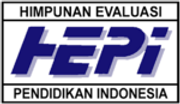Self-Paced Learning: Islamic Religious Education Learning Method in Elementary School during COVID-19 Pandemic
Abstract
Keywords
Full Text:
PDFReferences
Abdullah, W. (2018). Model Blended Learning dalam Meningkatkan Efektifitas Pembelajaran. FIikrotuna: Jurnal Pendidikan Dan Manajemen Islam, 7(2), 855–866.
Aeni, N. (2021). Pandemi COVID-19: Dampak Kesehatan, Ekonomi, & Sosial. Jurnal Litbang: Media Informasi Penelitian, Pengembangan Dan IPTEK, 17(1), 17–34. https://doi.org/10.33658/jl.v17i1.249
Ainiyah, N. (2013). Pembentukan Karakter Melalui Pendidikan Agama Islam. Jurnal Al-Ulum, 13(1), 25-38.
Amalia, A., & Sa’adah, N. (2020). Dampak Wabah Covid-19 Terhadap Kegiatan Belajar Mengajar Di Indonesia. Jurnal Psikologi, 13(2), 214–225. https://doi.org/10.35760/psi.2020.v13i2.3572
Astuti, E. T. (2017). Problematika Implementasi Penilaian Autentik Kurikulum 2013 Dalam Pembelajaran Pendidikan Agama Islam Di Sd Negeri Ploso I Pacitan. Al-Idaroh, 1(2), 18–41.
Baber, H. (2020). Determinants of students’ perceived learning outcome and satisfaction in online learning during the pandemic of Covid 19. Journal of Education and E-Learning Research, 7(3), 285–292.
Bungin, B. (2011). Penelitian Kualitatif: Komunikasi, Ekonomi, Kebijakan Publik, dan Ilmu Sosial Lainnya. Jakarta: Kencana.
Cresswell, J. (2013). Qualitative Inquiry and Research Design: Choosing Among Five Approaches. California: Sage Publication.
Fitriansyah, F. (2022). Dinamika Pembelajaran Tatap Muka Terbatas Di Kalangan Mahasiswa. Prima Magistra: Jurnal Ilmiah Kependidikan, 3(1), 123–130. https://doi.org/10.37478/jpm.v3i1.1438
Husna, M., & Sugito, S. (2021). Eksplorasi Penerapan Pembelajaran Tatap Muka Terbatas pada Jenjang PAUD di Masa Kebiasaan Baru. Jurnal Obsesi : Jurnal Pendidikan Anak Usia Dini, 6(3), 1846–1858. https://doi.org/10.31004/obsesi.v6i3.1814
Istiningsih, S., & Hasbullah, H. (2015). Blended Learning, Trend Strategi Pembelajaran Masa Depan. Jurnal Elemen, 1(1), 49. https://doi.org/10.29408/jel.v1i1.79
Kindy, S.A., Kindy, F.A., Kindy, A.A. (2021). The Advantages and Disadvantages of Self Directed Learning: A Survey Study of Saudi Medical Students [version 1], MedEdPublish. DOI: 10.15694/mep.2018.0000058.1.
Machali, I., & Astuti, E. T. (2018). Implementation of Integrated Authentic Thematic Assessment in the 2013 Curriculum At Min Sidoarjo Pacitan 2016/2017. Sunan Kalijaga International Journal on Islamic Educational Research, 1(1), 15–33. https://doi.org/10.14421/skijier.2017.2017.11-02
Maryono. (2017). Atmosfer Sekolah Dasar Dan Implikasinya Bagi Pendidikan Guru Sekolah Dasar. Jurnal Ilmiah Universitas Batangsari Jambi, 17(1), 103-113
Misko, J. (2000). Getting to Grips with self-paced learning. Kensington: NCVER Ltd.
Mulyana, D. (2018). Metodologi Penelitian Kualitatif: Paradigma Baru Ilmu Komunikasi dan Ilmu Sosial. Bandung: Remaja Rosdakarya.
Musya’Adah, U. (2018). Peran Penting Pendidikan Agama Islam Di Sekolah Dasar. Aulada: Jurnal Pendidikan Dan …, I(2), 9–27. Retrieved from http://e-journal.ikhac.ac.id/index.php/aulada%0Ahttp://e-journal.ikhac.ac.id/index.php/aulada/article/view/556
Nasution, N., Jalinus, N., & Syahril. (2019). Buku Model Blended Learning. Riau: Unilak Press.
Nurmalasari, Y., & Erdiantoro, R. (2020). Perencanaan Dan Keputusan Karier: Konsep Krusial Dalam Layanan BK Karier. Quanta, 4(1), 44–51. https://doi.org/10.22460/q.v1i1p1-10.497
Putri, R. N. (2020). Indonesia dalam Menghadapi Pandemi Covid-19. Jurnal Ilmiah Universitas Batanghari Jambi, 20(2), 705. https://doi.org/10.33087/jiubj.v20i2.1010
Sabarudin, S. (2018). Materi Pembelajaran Dalam Kurikulum 2013. Jurnal An-Nur: Kajian Ilmu-Ilmu Pendidikan, 04(01), 1–18. Retrieved from https://journal.an-nur.ac.id/index.php/annur/article/view/69
Subandi. (2011). Qualitative Description as one Method in Performing Arts Study. Harmonia, (19), 173–179.
Sudarti, D. O. (2019). Kajian teori behavioristik stimulus dan respon dalam meningkatkan minat belajar siswa. Tarbawi: Jurnal Pendidikan Islam, 16(2), 55–72. Retrieved from https://ejournal.unisnu.ac.id/JPIT/article/view/1173
Sugiyono. (2013). Metode Penelitian Pendidikan Kuantitatif, Kualitatif dan R&D. Bandung: Alfabeta.
Sugiyono. (2014). Memahami Penelitian Kualitatif. Bandung: Alfabeta.
Sulistyowati, E. (2012). Pembelajaran PAI di Sekolah Dasar. Al-Bidayah, 4(1), 63–76.
Suwandi, B. (2008). Memahami Penelitian Kualitatif. Jakarta: Rineka Cipta.
Tullis, J. G., & Benjamin, A. S. (2011). On the effectiveness of self-paced learning. Journal of Memory and Language, 64(2), 109–118. https://doi.org/10.1016/j.jml.2010.11.002.On
Ulya, M. A. W. (2021). Problematika Pembelajaran Pendidikan Agama Islam Melalui Microsoft Teams pada Masa Pandemi. Al-Thariqah, 6(1), 105–120. https://doi.org/10.25299
DOI: https://doi.org/10.18326/mdr.v14i1.1-16
Refbacks
- There are currently no refbacks.
Copyright (c) 2022 Efi Tri Astuti, M Fahmi Maulana, Hussein Saadi Mohammed Ali

This work is licensed under a Creative Commons Attribution 4.0 International License.

This work is licensed under a Creative Commons Attribution 4.0 International License.
Program Studi Pendidikan Guru Madrasah Ibtidaiyah (PGMI)
Universitas Islam Negeri (UIN) Salatiga, Indonesia
Jl. Lingkar Salatiga Km. 2 Pulutan, Sidorejo, Kota Salatiga, Jawa Tengah 50716,
Telp. (0298) 323706 – Fax. (0298) 323433
Technical Support: jurnalmudarrisa@iainsalatiga.ac.id
P-ISSN: 2085-2061
E-ISSN: 2541-3457



